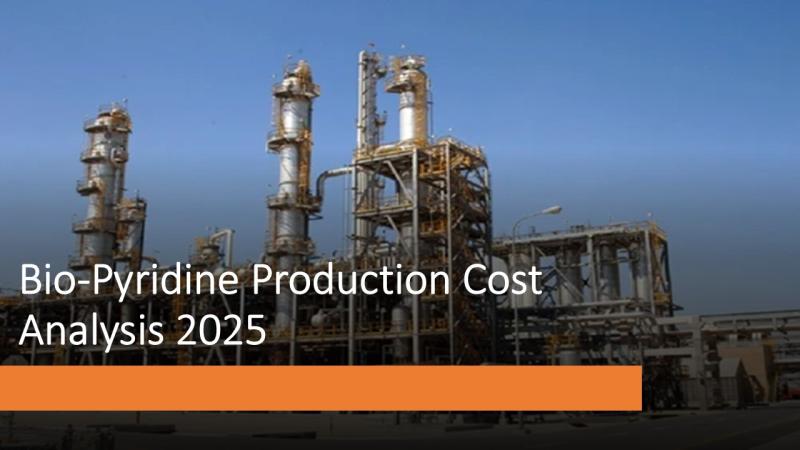Press release
Bio-Pyridine Production Cost Analysis 2025: Feasibility Study and Profit Margins
Introduction:Bio-pyridine refers to pyridine, a fundamental heterocyclic organic compound (C5H5N), that is produced through sustainable and renewable biological pathways. Unlike conventional pyridine derived from petrochemicals or coal tar, bio-pyridine leverages methods like microbial fermentation or enzymatic processes using biomass, aldehydes, or amino acids as feedstocks. This approach aligns with green chemistry principles by reducing reliance on fossil resources, minimizing environmental impact, and offering a more eco-friendly alternative for its wide applications in pharmaceuticals, agrochemicals, and industrial solvents.
Setting up a bio-pyridine production plant involves advanced bioprocessing technologies, including fermentation tanks, bioreactors, and downstream purification units for separation and distillation. Key considerations for plant setup include securing consistent, high-quality biomass or other bio-based raw materials. Significant investment is required for specialized equipment, stringent quality control measures to meet purity standards for various applications, and robust waste management systems for by-products. Compliance with environmental regulations and obtaining necessary certifications for bio-based production are also paramount for successful operation.
IMARC Group's report, titled "Bio-Pyridine Production Cost Analysis 2025: Industry Trends, Plant Setup, Machinery, Raw Materials, Investment Opportunities, Cost and Revenue," provides a complete roadmap for setting up a bio-pyridine production plant. It covers a comprehensive market overview to micro-level information such as unit operations involved, raw material requirements, utility requirements, infrastructure requirements, machinery and technology requirements, manpower requirements, packaging requirements, transportation requirements, etc.
Request for a Sample Report: https://www.imarcgroup.com/bio-pyridine-manufacturing-plant-project-report/requestsample
Bio-Pyridine Industry outlook 2025
The bio-pyridine industry is projected for significant growth in 2025, driven by a global shift towards sustainable chemistry and stricter environmental regulations. Key drivers include increasing demand from pharmaceuticals for drug synthesis, expanding applications in agrochemicals for more eco-friendly pesticides, and growing interest in bio-based solvents. Advancements in biotechnology enabling efficient fermentation processes are boosting production. The market is also propelled by government support for bio-based chemicals and rising consumer preference for sustainable products, particularly across the Asia-Pacific region.
Key Insights for Bio-Pyridine Production Plant Setup
Detailed Process Flow
• Product Overview
• Unit Operations Involved
• Mass Balance and Raw Material Requirements
• Quality Assurance Criteria
• Technical Tests
Project Details, Requirements and Costs Involved:
• Land, Location and Site Development
• Plant Layout
• Machinery Requirements and Costs
• Raw Material Requirements and Costs
• Packaging Requirements and Costs
• Transportation Requirements and Costs
• Utility Requirements and Costs
• Human Resource Requirements and Costs
Capital Expenditure (CapEx) and Operational Expenditure (OpEx) Analysis:
Project Economics:
• Capital Investments
• Operating Costs
• Expenditure Projections
• Revenue Projections
• Taxation and Depreciation
• Profit Projections
• Financial Analysis
Profitability Analysis:
• Total Income
• Total Expenditure
• Gross Profit
• Gross Margin
• Net Profit
• Net Margin
Key Cost Components of Setting Up a Bio-Pyridine Plant
• Land & Site Development: Acquiring suitable industrial land and preparing the site for construction, including necessary infrastructure.
• Specialized Bioreactors & Fermentation Units: Significant investment in advanced equipment for microbial fermentation or enzymatic processes.
• Downstream Processing Equipment: Costs for separation, purification (e.g., distillation columns, chromatography), and crystallization units to achieve high purity bio-pyridine.
• Raw Material Sourcing: Expenses related to securing a consistent supply of sustainable biomass or other bio-based feedstocks.
• Utilities & Energy: Establishing connections and systems for power, water, steam, and ensuring energy-efficient operations.
• Waste Treatment & By-product Valorization: Investment in systems for managing process waste and potentially converting by-products into valuable streams.
• Quality Control & R&D: Costs for analytical laboratories, quality assurance, and ongoing research to optimize processes and develop new applications.
• Environmental & Regulatory Compliance: Fees for permits, licenses, and ensuring adherence to stringent environmental and safety standards for bio-based chemical production.
Economic Trends Influencing Bio-Pyridine Plant Setup Costs 2025
• Raw Material Volatility: Prices of bio-based feedstocks (biomass, agricultural by-products) can fluctuate due to seasonal availability, climate, and competing uses.
• High Capital Outlay: Significant upfront investment is needed for specialized bioreactors, advanced purification, and fermentation-specific infrastructure.
• Technological Complexity: Scaling up bio-processes from lab to commercial scale can pose technical hurdles and require ongoing R&D.
• Regulatory & Certification: Navigating complex environmental regulations and securing certifications for bio-based chemicals adds to costs and market entry time.
• Market Competition: Competing with established, often lower-cost, petrochemical-derived pyridine requires strong differentiation and market education.
Speak to an Analyst for Customized Report:
https://www.imarcgroup.com/request?type=report&id=28215&flag=C
Challenges and Considerations for Investors
• Raw Material Volatility: Prices of bio-based feedstocks (biomass, agricultural by-products) can fluctuate significantly due to seasonal availability, climate, and competing uses.
• High Capital Outlay: Significant upfront investment is needed for specialized bioreactors, advanced purification, and fermentation-specific infrastructure.
• Technological Complexity: Scaling up bio-processes from lab to commercial scale can pose technical hurdles and require ongoing R&D.
• Regulatory & Certification: Navigating complex environmental regulations and securing certifications for bio-based chemicals adds to costs and market entry time.
• Market Competition: Competing with established, often lower-cost, petrochemical-derived pyridine requires strong differentiation and market education.
Buy Now: https://www.imarcgroup.com/checkout?id=28215&method=1911
Conclusion
The bio-pyridine industry is poised for significant growth in 2025, driven by the global shift towards sustainable chemistry and increasing demand from pharmaceuticals and agrochemicals for eco-friendly alternatives. Establishing a plant requires substantial capital for specialized bioreactors and purification systems. Investors face challenges from raw material price volatility, technological complexities in scaling up, and intense competition from conventional pyridine. Navigating evolving regulations and securing certifications for bio-based chemicals will be crucial for a successful and sustainable venture.
About Us: IMARC Group is a global management consulting firm that helps the world's most ambitious changemakers to create a lasting impact. The company excel in understanding its client's business priorities and delivering tailored solutions that drive meaningful outcomes. We provide a comprehensive suite of market entry and expansion services. Our offerings include thorough market assessment, feasibility studies, company incorporation assistance, factory setup support, regulatory approvals and licensing navigation, branding, marketing and sales strategies, competitive landscape, and benchmarking analyses, pricing and cost research, and procurement research.
Contact Us:
IMARC Group
134 N 4th St. Brooklyn, NY 11249, USA
Email: sales@imarcgroup.com
Tel No:(D) +91 120 433 0800
United States: +1-631-791-1145
This release was published on openPR.
Permanent link to this press release:
Copy
Please set a link in the press area of your homepage to this press release on openPR. openPR disclaims liability for any content contained in this release.
You can edit or delete your press release Bio-Pyridine Production Cost Analysis 2025: Feasibility Study and Profit Margins here
News-ID: 4093723 • Views: …
More Releases from IMARC Group
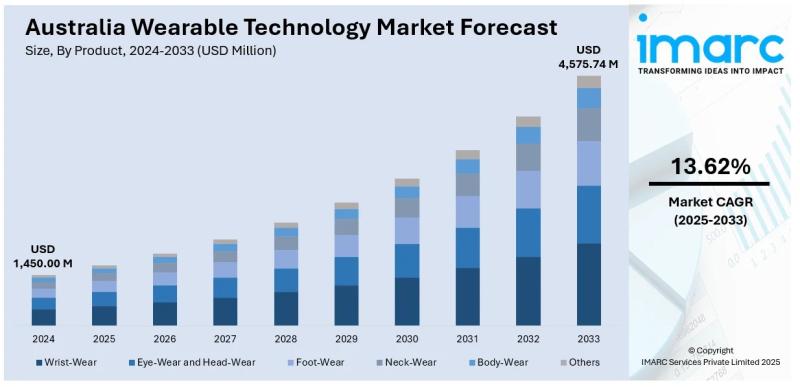
Australia Wearable Technology Market Projected to Reach USD 4,575.74 Million by …
Market Overview
The Australia wearable technology market size reached USD 1,450.00 Million in 2024 and is expected to grow significantly, reaching USD 4,575.74 Million by 2033. The expected market growth is driven by advancements in health monitoring, integration of the Internet of Things (IoT), and increasing adoption of medical wearables for remote health monitoring. This expansion is fueled by consumer interest in health and fitness, as well as smart home applications.
For…
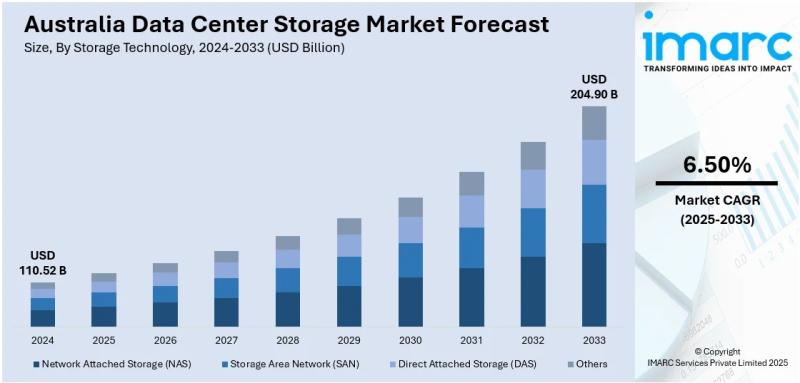
Australia Data Center Storage Market Projected to Reach USD 204.90 Billion by 20 …
Market Overview
The Australia data center storage market reached USD 110.52 Billion in 2024 and is projected to grow to USD 204.90 Billion by 2033, with a forecast period spanning 2025-2033. The market expansion is driven by increased data generation across industries, widespread cloud computing adoption, hybrid cloud models, and technological advances in storage.
Explore the detailed report on the Australia Data Center Storage Market https://www.imarcgroup.com/australia-data-center-storage-market
How AI is Reshaping the Future…
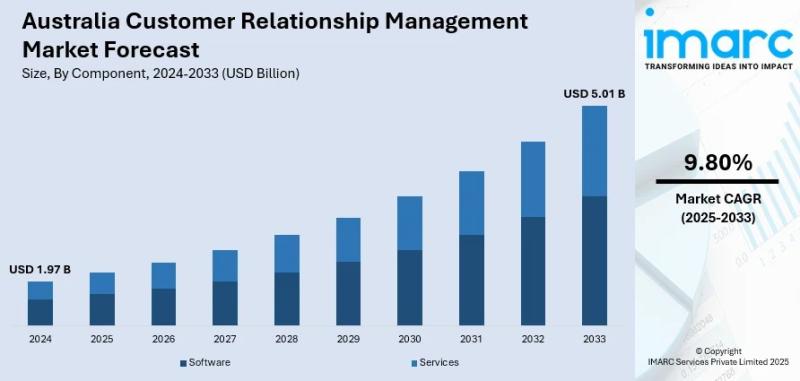
Australia Customer Relationship Management Market Projected to Reach USD 5.01 Bi …
Market Overview
The Australia Customer Relationship Management Market was valued at USD 1.97 Billion in 2024. The market is projected to expand significantly, anticipated to reach USD 5.01 Billion by 2033. This growth is attributed to the rising digital transformation across industries, increasing demand for customer-centric strategies, wider cloud adoption, and the integration of AI and data analytics that enhances customer insights and operational efficiency. These drivers are fueling personalized customer…
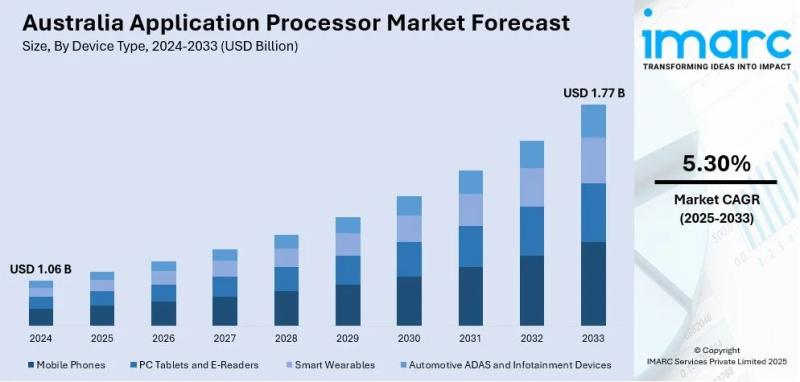
Australia Application Processor Market Projected to Reach USD 1.77 Billion by 20 …
Market Overview
The Australia application processor market size was valued at USD 1.06 Billion in 2024. It is anticipated to expand to USD 1.77 Billion by 2033. This growth is propelled by rising smartphone usage, expanding demand for AI-enabled devices, and IoT applications. Addition of 5G networks and government digital infrastructure initiatives are key contributors. Consumer demand for advanced mobile performance and ongoing innovations in processor technology are further driving the…
More Releases for Cost
Egg Powder Manufacturing Plant Setup Cost | Cost Involved, Machinery Cost and In …
IMARC Group's report titled "Egg Powder Manufacturing Plant Project Report 2024: Industry Trends, Plant Setup, Machinery, Raw Materials, Investment Opportunities, Cost and Revenue" provides a comprehensive guide for establishing an egg powder manufacturing plant. The report covers various aspects, ranging from a broad market overview to intricate details like unit operations, raw material and utility requirements, infrastructure necessities, machinery requirements, manpower needs, packaging and transportation requirements, and more.
In addition to…
Glucose Manufacturing Plant Cost Report 2024: Requirements and Cost Involved
IMARC Group's report titled "Glucose Manufacturing Plant Project Report 2024: Industry Trends, Plant Setup, Machinery, Raw Materials, Investment Opportunities, Cost and Revenue" provides a comprehensive guide for establishing a glucose manufacturing plant. The report covers various aspects, ranging from a broad market overview to intricate details like unit operations, raw material and utility requirements, infrastructure necessities, machinery requirements, manpower needs, packaging and transportation requirements, and more.
In addition to the operational…
Fatty Alcohol Production Cost Analysis: Plant Cost, Price Trends, Raw Materials …
Syndicated Analytics' latest report titled "Fatty Alcohol Production Cost Analysis 2023-2028: Capital Investment, Manufacturing Process, Operating Cost, Raw Materials, Industry Trends and Revenue Statistics" includes all the essential aspects that are required to understand and venture into the fatty alcohol industry. This report is based on the latest economic data, and it presents comprehensive and detailed insights regarding the primary process flow, raw material requirements, reactions involved, utility costs, operating costs, capital…
Acetaminophen Production Cost Analysis Report: Manufacturing Process, Raw Materi …
The latest report titled "Acetaminophen Production Cost Report" by Procurement Resource a global procurement research and consulting firm, provides an in-depth cost analysis of the production process of the Acetaminophen. Read More: https://www.procurementresource.com/production-cost-report-store/acetaminophen
Report Features - Details
Product Name - Acetaminophen
Process Included - Acetaminophen Production From Phenol
Segments Covered
Manufacturing Process: Process Flow, Material Flow, Material Balance
Raw Material and Product/s Specifications: Raw Material Consumption, Product and Co-Product Generation, Capital Investment
Land and Site Cost: Offsites/Civil…
Corn Production Cost Analysis Report: Manufacturing Process, Raw Materials Requi …
The latest report titled "Corn Production Cost Report" by Procurement Resource, a global procurement research and consulting firm, provides an in-depth cost analysis of the production process of the Corn. Read More: https://www.procurementresource.com/production-cost-report-store/corn
Report Features - Details
Product Name - Corn Production
Segments Covered
Manufacturing Process: Process Flow, Material Flow, Material Balance
Raw Material and Product/s Specifications: Raw Material Consumption, Product and Co-Product Generation, Capital Investment
Land and Site Cost: Offsites/Civil Works, Equipment Cost, Auxiliary Equipment…
Crude Oil Production Cost Analysis Report: Manufacturing Process, Raw Materials …
The latest report titled "Crude Oil Production Cost Report" by Procurement Resource, a global procurement research and consulting firm, provides an in-depth cost analysis of the production process of the Crude Oil. Read More: https://www.procurementresource.com/production-cost-report-store/crude-oil
Report Features - Details
Product Name - Crude Oil
Segments Covered
Manufacturing Process: Process Flow, Material Flow, Material Balance
Raw Material and Product/s Specifications: Raw Material Consumption, Product and Co-Product Generation, Capital Investment
Land and Site Cost: Offsites/Civil Works, Equipment Cost,…
